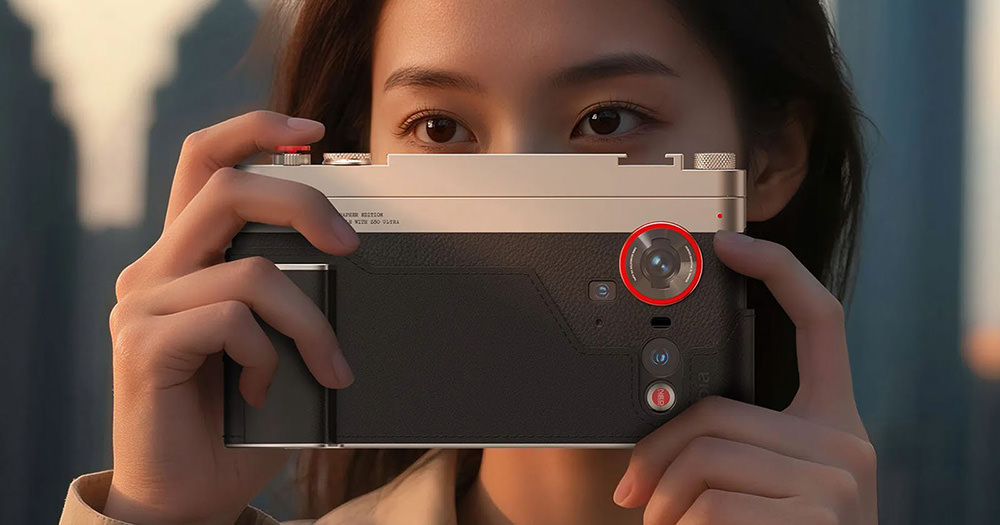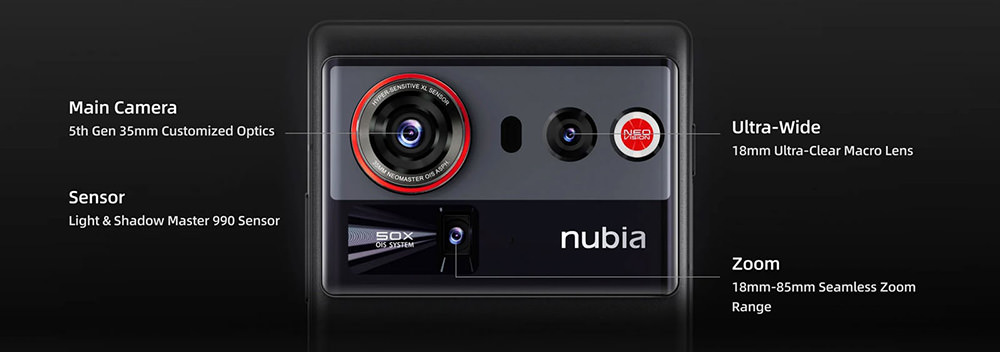Nubia Presents The Z80 Ultra with Advanced Camera System
Recently, several Chinese smartphones equipped with photography-focused accessories have attracted attention, including the Nubia Z80 Ultra. The device, initially teased in China and later introduced globally, is positioned as a camera-centric smartphone built around Qualcomm’s Snapdragon 8 Elite Gen 5 platform and a large 7,200 mAh battery. It continues the design approach of the Z70S Ultra, maintaining a full-screen front with an under-display camera. The phone also employs a 6.85-inch AMOLED panel with a 144 Hz refresh rate, peak brightness of 2,000 nits, slim bezels, and a 16-megapixel selfie camera hidden beneath the display. Touch sampling can reach 3,000 Hz in gaming mode.
The Z80 Ultra’s main focus is its imaging system: Nubia has introduced what it calls a dual-primary camera arrangement built around focal lengths traditionally associated with classic photography. The rear setup includes a 35 mm main camera using a 50-megapixel OV990 sensor with a 1/1.3-inch format and f/1.7 aperture; an 18 mm ultra-wide module with a 1/1.55-inch sensor and f/1.8 aperture; and a 70 mm telephoto lens with f/2.4, optical stabilization, and up to 50× hybrid zoom achieved via a 12× digital crop. The ultra-wide camera represents one of the most significant upgrades, replacing the Z70S Ultra’s narrower 13 mm lens with a larger sensor intended to capture more light and limit distortion. Nubia emphasizes that the larger sensor addresses compromises frequently seen in competing ultra-wide systems, including those in prominent rival flagships.
Early image samples released in promotional teasers suggest an effort to maintain restrained processing. The main camera appears to deliver neutral color and controlled contrast, though some posted samples show mild softness likely caused by compression. The ultra-wide lens produces consistent white balance and moderate perspective stretching, while the telephoto unit shows strong separation between subjects and backgrounds with limited noise. The overall camera module has been reshaped compared to the previous model, though the general aesthetic—characterized by curved edges and a dedicated shutter button—remains largely consistent.
Nubia has also developed a Retro Photography Kit 2.0 in collaboration with Fotorgear. The kit includes a rangefinder-style grip covered in a leather-like texture, an aluminum alloy frame with a titanium tone, a classic lens hood, a shoulder strap, and physical controls including mechanical buttons and a red shutter release reminiscent of older cameras. When mounted, the phone resembles a compact digital camera, especially when viewed from the rear.
Beyond imaging, the device includes 90 W wired charging and 80 W wireless charging, an ultrasonic fingerprint sensor, Wi-Fi 7 support, NFC, Bluetooth 6.0, a USB-C 3.2 Gen 1 port, dual speakers with DTS:X Ultra, and five microphones. It runs MyOS atop Android 16 and offers IP68/IP69 water- and dust-resistance along with a customizable slide key. The phone is available in Black, White, and Starry Night finishes, though some color options are restricted to specific memory configurations. Storage variants range from 12 GB RAM with 256 GB of storage to 16 GB RAM paired with 1 TB.
Pricing in global markets begins at $649, £579, or €649 depending on region, with higher-capacity models priced correspondingly higher. The Retro Photography Kit is sold separately at $149.






